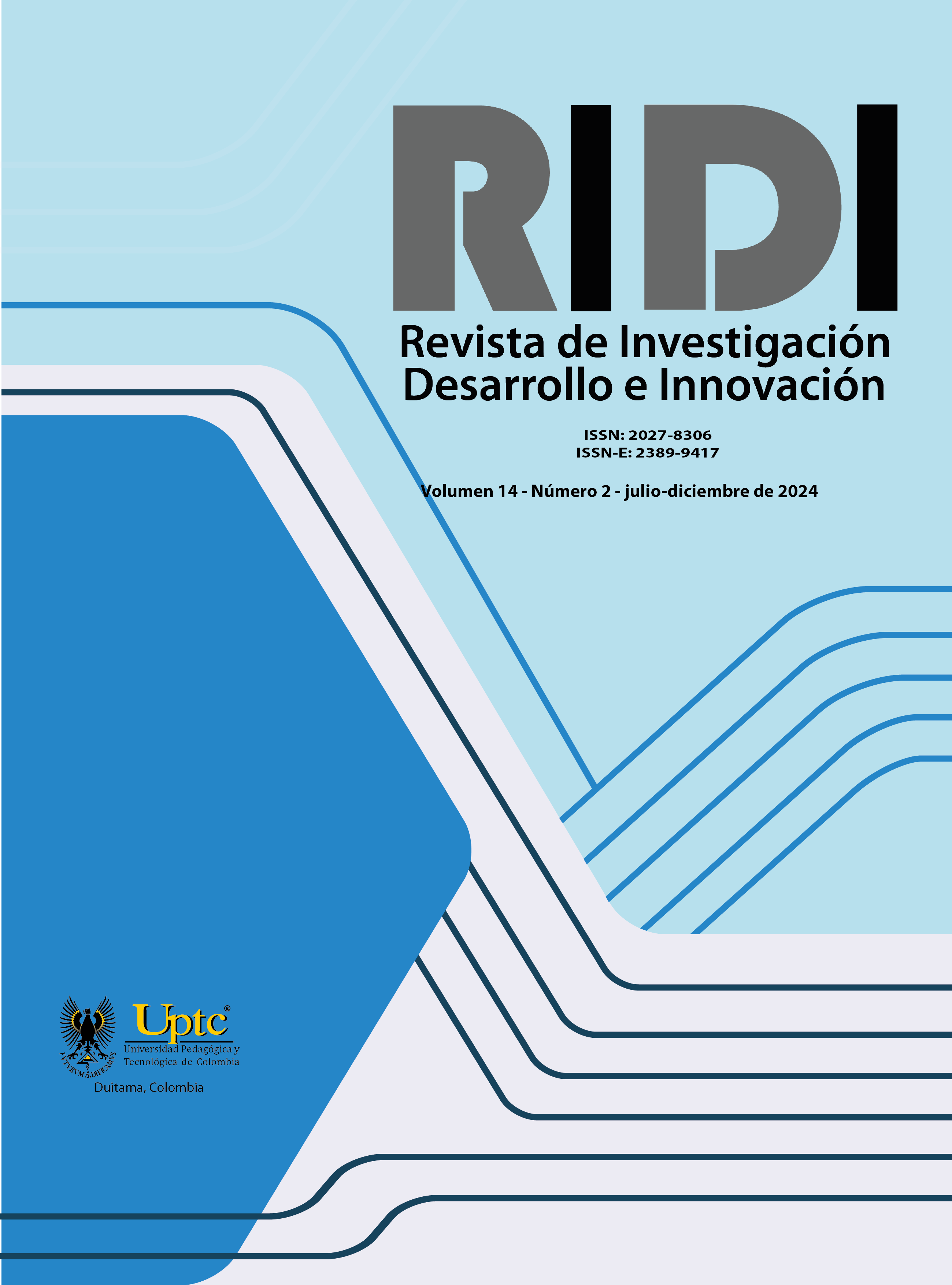Testing and analysis of a D-STATCOM prototype connected to the electrical network

Resumen
Este artículo trata sobre los dispositivos FACTS (Flexible AC Transmission Systems), en especial sobre el diseño e implementación de un prototipo D-STATCOM, comparando su funcionamiento real con el esperado en la teoría. Se utilizó una estrategia basada en control difuso, empleando la herramienta de Matlab para diseñar el controlador. La red neuronal se entrenó con el voltaje de la red, el voltaje de la etapa inversora, la corriente, las potencias activa y reactiva y el factor de potencia como parámetros de entrada. Inicialmente, el factor de potencia de la carga fue de 0.62 y la operación del prototipo permitió incrementar su voltaje por encima del voltaje de la red, lo cual se refleja en la corriente directa, modificando el factor de potencia a un valor de 0.91 mientras se mantiene el voltaje constante. Finalmente, los resultados demuestran la relación entre el aumento de la etapa inversora del prototipo sobre la línea de energía eléctrica, obteniendo un capacitor variable, ajustando así el factor de potencia.
Palabras clave
D-STATCOM, FACTS, control difuso, sincronización
Biografía del autor/a
Mauricio José Triana-Figueroa
Ingeniero Eléctrico, Magíster en Controles Industriales.
Jorge Luís Díaz-Rodríguez
Ingeniero Electricista, Magíster en Automática.
Aldo Pardo-García
Ingeniero Electricista, Doctor en Ciencias
Citas
- Al-Adwan, I. M., & Al Shiboul, Y. A. (2020). Effect of the Modulation Index and the Carrier Frequency on the Output Vol Tage Waveform of the Spwm Voltage Source Inverter. Proceedings of the 17th International Multi-Conference on Systems, Signals and Devices, SSD 2020, 960–968. https://doi.org/10.1109/SSD49366.2020.9364104 DOI: https://doi.org/10.1109/SSD49366.2020.9364104
- Angarita, W., Aristizabal, V., & Acevedo, E. (2019). Plataforma de captura, almacenamiento, procesamiento y visualización de datos de una red acelerométrica orientada al monitoreo de salud estructural. Revista Colombiana de Tecnologías de Avanzada, 2 (34), 127–136. https://doi.org/10.24054/rcta.v2i34.72 DOI: https://doi.org/10.24054/16927257.v34.n34.2019.72
- Chang, W. N., & Yeh, K. D. (2003). Design and implementation of DSTATCOM with symmetrical components methodfor fast load compensation of unbalanced distribution systems. Proceedings of the International Conference on Power Electronics and Drive Systems, 2, 1547–1551. https://doi.org/10.1109/PEDS.2003.1283219 DOI: https://doi.org/10.1109/PEDS.2003.1283219
- Durán-Chinchilla, C. M., & Rosado-Gómez, A. A. (2020). Aprendizaje activo e innovación en estudiantes de ingeniería. Revista Colombiana de Tecnologías de Avanzada, 1 (35), 127–135. https://doi.org/10.24054/rcta.v1i35.52 DOI: https://doi.org/10.24054/16927257.v35.n35.2020.52
- Haider, R., Alam, R., Yousuf, N. B., & Salim, K. M. (2012). Design and construction of single phase pure sine wave inverter for photovoltaic application. 2012 International Conference on Informatics, Electronics and Vision, ICIEV 2012, 190–194. https://doi.org/10.1109/ICIEV.2012.6317332 DOI: https://doi.org/10.1109/ICIEV.2012.6317332
- Hannan, S., Aslam, S., & Ghayur, M. (2018). Design and real-time implementation of SPWM based inverter. 2018 International Conference on Engineering and Emerging Technologies, ICEET 2018, 1–6. https://doi.org/10.1109/ICEET1.2018.8338637 DOI: https://doi.org/10.1109/ICEET1.2018.8338637
- Lopatkin, N. N. (2017). Voltage source multilevel inverter voltage quality comparison under multicarrier sinusoidal PWM and space vector PWM of two delta voltages. Proceedings - 2017 International Multi-Conference on Engineering, Computer and Information Sciences, SIBIRCON 2017, 439–444. https://doi.org/10.1109/SIBIRCON.2017.8109923 DOI: https://doi.org/10.1109/SIBIRCON.2017.8109923
- Pérez-García, D., García-Reina, F., & Hernández-Eduardo, D. (2019). Disminución de las pérdidas de energía eléctrica por distribución usando una tecnología novedosa de mediciones y control para la toma de decisiones. Revista Colombiana de Tecnologías de Avanzada, 2 (34), 144–150. https://doi.org/10.24054/rcta.v2i34.75 DOI: https://doi.org/10.24054/16927257.v34.n34.2019.75
- Serna-Montoya, L. F., Suárez-Ramírez, J. P., Ramírez-Gil, M., Muñoz-Galeano, N., Cano-Quintero, J. B., & López-Lezama, J. M. (2023). Analysis of balanced, unbalanced, sinusoidal and nonsinusoidal three-phase systems through a Python developed tool. Revista de Investigación, Desarrollo e Innovación, 13 (1), 145-156. https://doi.org/10.19053/20278306.v13.n1.2023.16063 DOI: https://doi.org/10.19053/20278306.v13.n1.2023.16063
- Yuditya, B. H., Hasanah, R. N., Ardhenta, L., & Taufik, T. (2020). Performance Comparison of Single-Phase Multilevel Inverter with SPWM Unipolar and Bipolar Switching Techniques. Proceeding - 1st FORTEI-International Conference on Electrical Engineering, FORTEI-ICEE 2020, 102–107. https://doi.org/10.1109/FORTEI-ICEE50915.2020.9249911 DOI: https://doi.org/10.1109/FORTEI-ICEE50915.2020.9249911
